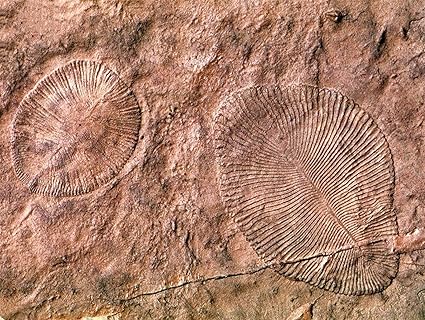 |
| Flat, largely immobile Ediacarans such as Dickinsonia have been viewed as responsible for the delayed origin of complex animals |
It is only in the Cambrian that we see extensive evidence of a diverse community of burrowing organisms - members of the so-called Cambrian substrate revolution. It was therefore suggested that the algal mats and the activities of the large, immobile ediacarans prevented the development and diversification of mobile and complex organisms capable of engaging in energy-expensive activities, such as burrowing.
The ediacarans were responsible for the decline in algal mats, but they also restricted the diversification of complex burrowing organisms. Life could therefore only progress after the destruction of the algal mats and the decline of the Ediacarans. A recent hypothesis has been put forward, however, which highlights the role of cooperation in the origin of animal diversity. Put forward by Graham Budd from Uppsala University in Sweden and Sören Jensen, from Badajoz University in Spain, the hypothesis is based on the way water holes in savannahs provide nutrient-rich hot spots capable of supporting a greater diversity of life.
They suggest that the activities of the largely immobile, flat Ediacarans would have created a nutrient-rich microenvironment above and below the immediate vicinity of their bodies. Rather than the Ediacarans, and later animals, being direct competitors, the Ediacarans themselves created a permissive environment that was ideal for higher animals to evolve in. This evolutionary model is known as ecosystem engineering. Here, a number of key species influence their environment in such a way to create new opportunities for evolution and species diversification. Competitive evolution certainly played a role in the development of higher animals, as evidenced by the fossil record, but incorporating cooperative elements provides a richer and more nuanced account of animal diversity and evolution.